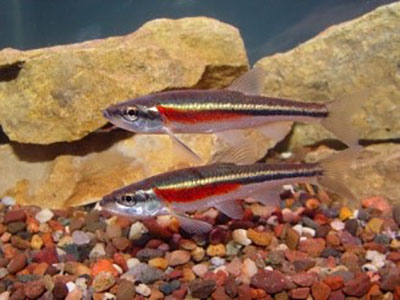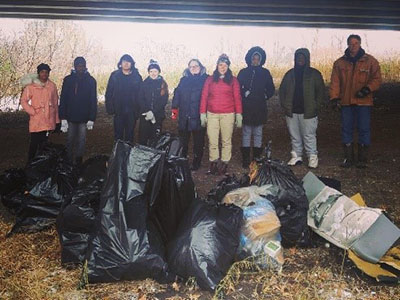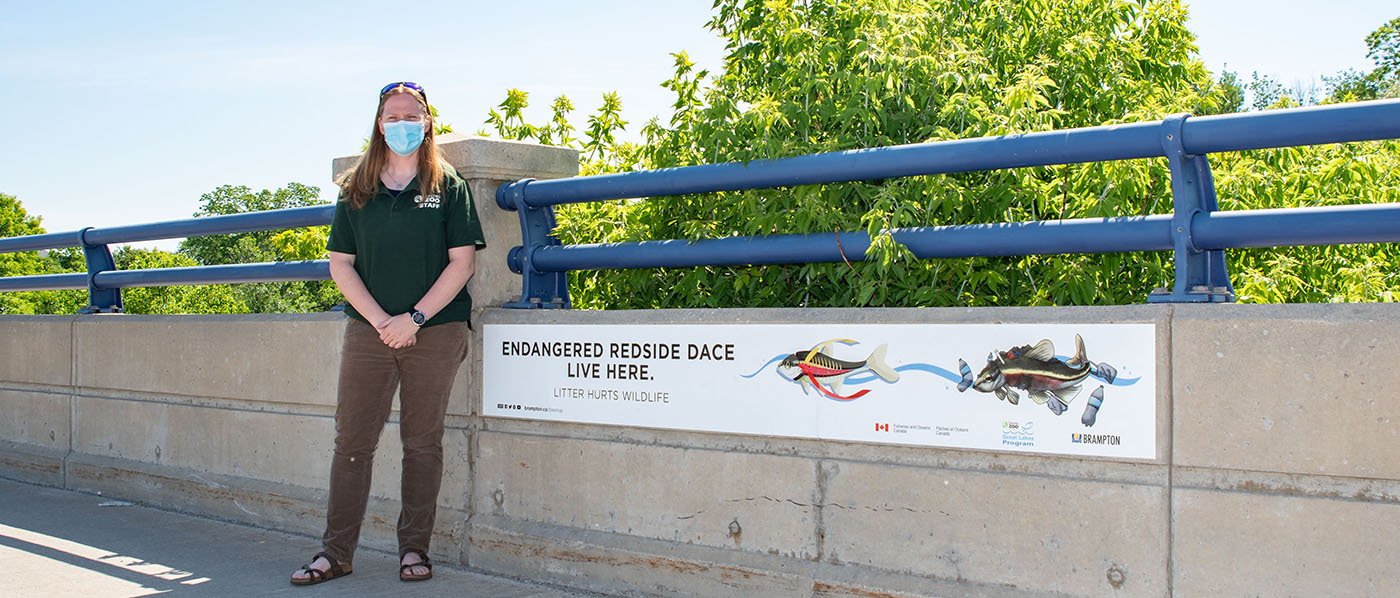
In partnership with the Toronto Zoo (Great Lakes Program), the City of Brampton and three students from the Regional Arts Program at Mayfield Secondary School have found a creative way to bring attention to the detrimental effect litter has on wildlife, specifically the endangered
Redside Dace.

Four large banners with powerful imagery now hang along the bridge at Williams Parkway and Mississauga Road. The graphics show the plight of the endangered fish, and send a clear visual message to bypassers to stop tossing litter over the bridge.
One student’s inspiration for the design came from their connection to and relationship with water. Nailani Cavero based her design concept around a wave motif to represent this. “No matter where you are on this planet, you will always be connected to the water. If we take care of our planet, we are taking care of our future,” she said.
The Reside Dace is an endangered fish that lives in the Greater Toronto Area. These minnows are vulnerable to pollution and habitat destruction. Redside Dace rely on their vision to catch their prey (such as mosquitos) and struggle to hunt when the water quality is poor. Huttonville Creek is one of the rivers where they occupy.
 So, how did this idea come about? Back in November 2019, the Toronto Zoo and Ontario Streams coordinated a cleanup of Huttonville Creek and collected many bags of litter. When they went back two weeks later, the site was once again full of litter and household waste. This inspired the Toronto Zoo to find a way to raise awareness about the sensitive species and their habitat.
So, how did this idea come about? Back in November 2019, the Toronto Zoo and Ontario Streams coordinated a cleanup of Huttonville Creek and collected many bags of litter. When they went back two weeks later, the site was once again full of litter and household waste. This inspired the Toronto Zoo to find a way to raise awareness about the sensitive species and their habitat.
A huge thank you to the students, the Toronto Zoo, and the
Government of Canada’s Habitat Stewardship Program for Species at Risk grant for bringing this initiative to fruition – your efforts will ensure our rivers stay clean and wildlife thrives.
Did you know?
It is estimated that almost 10,000 tonnes of plastic debris enter Ontario’s lakes and rivers each year. Litter along our shorelines, in our green spaces, and on our streets can spill into our waterways and break down into micro-plastics in the environment, which can hurt or even kill wildlife and damage ecosystems.
Click here to learn more.

